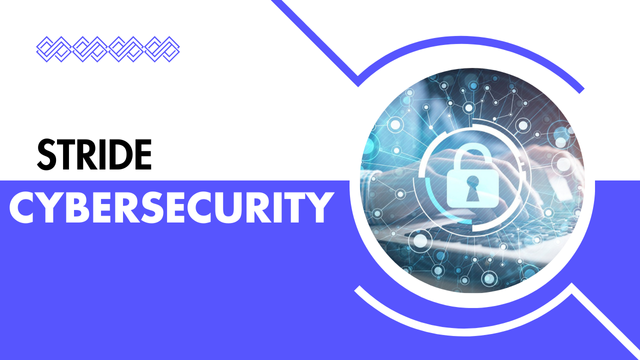STRIDE in Cybersecurity:
Understanding the nature of relationship that the use of this framework, the STRIDE Model, brings about will require a better comprehension of the framework itself.
Understand the Spoofing model
1.Spoofing
Spoofing means an attempt by an unauthorized person to gain access to other people or systems identities. This can range from creating fake ID’s such as user IDs or pass words in an effort to have unauthorized access. Several response mechanisms are prevention techniques that include the use of MFA, robust password, and legitimate identity confirmation protocols.
2. Tampering
Fraud consists in deliberate alteration of data. For instance, an attacker will modify the contents of files, configuration settings or communications protocols in order to affect operations or otherwise seize control of other systems. To reduce this risk organizations should use encryption, digital signatures and integrity checking.
3. Repudiation
Repudiation is when an individual under a transaction denies having carried out an action, for example, making a transaction. Some activities cannot be proved unless there are records and records cannot attribute accountability. Measures prevent include log files security, non-repudiation feature, and secure communication protocols
4. Information Disclosure
An information disclosure and it is also known as data leakage is a process of unauthorized access on sensitive information. This might be personal information or details of trade secrets or even uniquely coded data. Some measures to address information disclosure risk include; Data encryption, restricting access to data and frequent security assessment..
5. Elevation of Privilege
Privilege escalation also called as ‘privilege escalation’, happens when an attacker acquires any authority that he is not supposed to have. This can lead to day to day interrogation and unauthorized changes such as altering key system parameters. These include the principle of least privilege, access reviews, and more often monitoring for any out of the ordinary.
Introduction to STRIDE in Threat Modeling
Succesfully implementing the STRIDE framework can be done more easily in the context of SDLC. Teams can use it to:
1.Identify Threats: Consideration should be given to evaluating the STRIDE breakdown of the system design for probable susceptibilities.
2.Evaluate Risks: After the list of threats has been made, evaluate how likely each of the threats is to occur and what effects it will likely have.
3.Mitigate Vulnerabilities: It is necessary to derive an effective tactic to counter each of them in an organisation.
4.Validate Security: Periodically assess and validate the system to identify the outcomes of the put measures.
Benefits of STRIDE
1.Comprehensive Coverage: The approach of planning programs implemented by STRIDE is not arbitrary, it provides dissuasion against missing a significant threat vector.
2.Proactive Security: Designing for accessibility bears more meaning from the fact that it is most efficient to incorporate accessibility prior to the later stages of the development process because it is expensive to fix them then.
3.Improved Awareness: It encourages the understanding of security by development and operations teams.
FAQs
Cybersecurity concept: what is STRIDE?
STRIDE is a threat modeling framework that was created by Microsoft specifically to classify threats on security. There stands Spoofing, Tampering, Repudiation, Information Disclosure, Denial of Service, and Elevation of Privilege.
In applying threat modeling, how assist STRIDE?
STRIDE helps to find out threats that can be faced by a certain system in a structured and comprehensive manner. As teams shall be aware of the various types of threats which are likely to happen to the system, it will be easier to prevent risks for every category and improve the level of safety of the system.
Is STRIDE applicable to any system?
Indeed, there is a flexibility in how STRIDE can be utilised in order to assess different types of systems, including application and network structures. It is especially used when it is included in the software development life cycle (SDLC) phase.
Conclusion
The STRIDE framework is a perfect guide for organizations that want to improve their cybersecurity and cyber resilience. When each type of threat is approached methodically, various problems that may threaten the business’s systems, data, and users can be prevented. In light of continuously evolving and improved cyber threats, using the STRIDE strategy will effectively deter any emerging threats.
ALSO READ THIS: The Role Played by Two-Step Verification in the Modern Protection of Data
The Role Played by Two-Step Verification in the Modern Protection of Data

